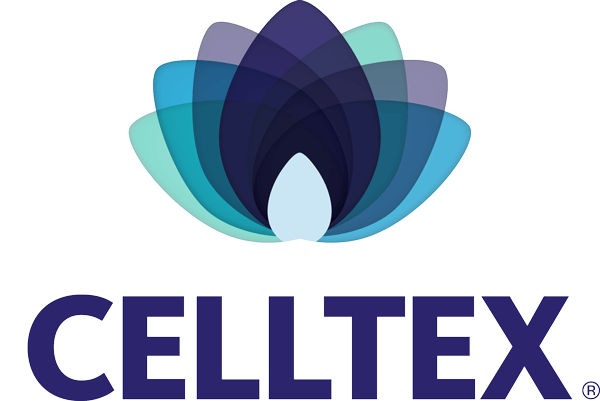Celltex News
An Introduction to Stem Cells & Stem Cell Therapy
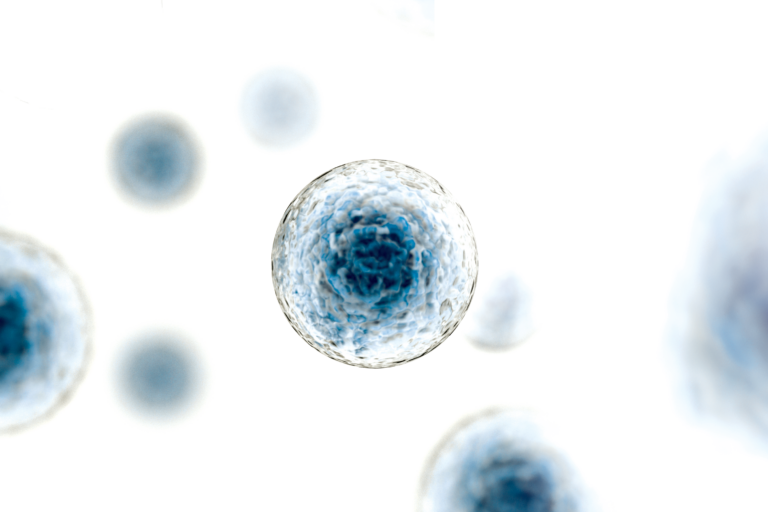
If you took a quick guess at how many cells you have in your body, what would it be?
The average number of cells, the most fundamental units that carry out all the processes necessary for life, is approximately:
- 36 trillion in men
- 28 trillion in women and
- 17 trillion in children [1]
Now imagine that—out of the trillions of cells in your body—you could have a small percentage of cells that function as blank canvases, with the potential to divide and develop into specific types of healthy cells capable of replacing damaged cells.
And if you could just have enough of these newfound healthy cells—and enough of them in the right place—you might be able to enjoy a life with less pain, discomfort, or symptoms that diminish your quality of life.
The good news is that you already have the base material in your body necessary for healthy cell replication and differentiation: stem cells. Unfortunately, as you age, the natural supply of stem cells in your body may not be enough to effectively respond to injury and disease, making stem cell therapy a beneficial, and sometimes necessary, option.
When it comes to stem cell therapy, there are a variety of options depending on the type of stem cell being used and where the stem cells came from. This article will explore which option may yield the safest and most-promising results depending on your condition.
In this article, we’ll explore fundamental questions, such as:
- What Are Stem Cells?
- What Are the Different Types of Stem Cells?
- What Are the Properties of Mesenchymal Stem Cells?
- What Applications & Conditions Are Stem Cells Used For?
- Where Can Stem Cells Be Found in the Body?
- Should I Use My Own Stem Cells or Donor Stem Cells?
- Putting It All Together: The Stem Cells Banked with Celltex
First, let’s address the basics. It has been well over a century since the term “stem cell” was first coined. Yet some people may still lack a clear understanding of what stem cells are and what their capabilities are.
What Are Stem Cells?
A Brief History
In 1868, the German biologist Ernst Haeckel first described how a cell from a fertilized egg serves as the blank biological canvas from which a body develops. Twenty years later, another German scientist, Theodor Boveri, discovered that roundworm embryo cells not only replicate, but also specialize into any other cell—the process of differentiating [2].
But arguably, the story of regenerative medicine began in the early 1900s with the work of scientists like Alexander Maximow, who introduced the theory upon which our “present concept of blood cells’ origin and differentiation is based” [3].
In 1909, Maximow is believed to have first introduced the term “stem cells” in a lecture he delivered before the Berlin Society of Hematology. Maximow posited that a set of stem cells in bone marrow could differentiate into red and white blood cells [4]. It is Maximow who is widely credited for describing a kind of precursor cell with the potential to develop into various blood cell types. In other words, stem cells—unspecialized cells that have not yet decided what type of adult cell they will be [5].
Where Does the Term “Stem Cell” Come From?
The term “stem cell” comes from the fact that these cells serve as the “stem” or source from which different types of cells arise. The name reflects the fundamental property of stem cells, which is their ability to give rise to various specialized cell types through a process known as differentiation.
The First Stem Cell Therapy
Ever since the first bone marrow transplantation was successfully performed by Dr. E. Donnall Thomas in 1956, stem cell therapy has generated both excitement and controversy. The controversy stems from the ethical dilemmas associated with embryonic stem cells, a different type of stem cell than what Thomas had worked with.
Nonetheless, Dr. Thomas’ landmark procedure that transplanted stem cells from the bone marrow of one individual to another laid the foundation for modern stem cell therapies.
“A promising agent for degenerative diseases”
Undoubtedly, the therapeutic potential of stem cells has generated plenty of excitement. In fact, in 2016, researchers writing in the Journal of Biomedical Sciences hailed stem cells as “the most promising agent for the treatment of degenerative and ischemic [cardiovascular] diseases due to their self-renewal and multilineage differentiation capacity” [6].
But in the seven decades since that first successful bone marrow transplant, what type of stem cells have shown the most promise in regenerative medicine lately?
To answer that question, let’s take a look at some of the different types of stem cells.
What Are the Different Types of Stem Cells?
There are stem cells in practically every tissue of your body. However, not all stem cells are the same. There are at least half a dozen types of stem cells, categorized based on their differentiation potential. For this intro to stem cells, let’s focus not on differentiation potential, but rather on three kinds of stem cells that you may have already heard about.
Embryonic Stem Cells
Embryonic stem cells are stem cells derived from early-stage embryos. Although they are pluripotent, meaning they can differentiate into all types of specialized cells in the body, they are considered unethical and therefore not used in regenerative medicine. Thus, when we’re describing stem cell therapy, we are not referring to embryonic stem cells.
Hematopoietic Stem Cells (HSCs)
Hematopoietic stem cells (HSCs) are the type of stem cells that Dr. E. Donnall Thomas used in the first stem cell therapy procedure (a bone marrow transplant).
These multipotent stem cells can self-renew, producing identical copies of themselves. However, they only differentiate into different types of blood cells—notably red blood cells, white blood cells, and blood-clotting platelets (the latter of which is used in platelet-rich plasma therapy, which physicians sometimes perform in conjunction with stem cell therapy).
The umbilical cord is another common source for HSCs. When a baby is born, or even months before, parents are often asked if they would like to have their child’s umbilical cord blood banked (stored) in the event the child later develops a disorder such as leukemia or anemia.
However, because HSCs only differentiate into different blood cells, they only have the potential to help treat certain blood disorders. It is a different type of stem cell that is often recommended for a myriad of other conditions: the Mesenchymal Stem Cell (MSC).
Mesenchymal Stem Cells (MSCs)
Mesenchymal Stem Cells are widely used in regenerative medicine and are often the type of stem cell being described when discussing stem cell therapy.
MSCs are known to have a number of beneficial properties.
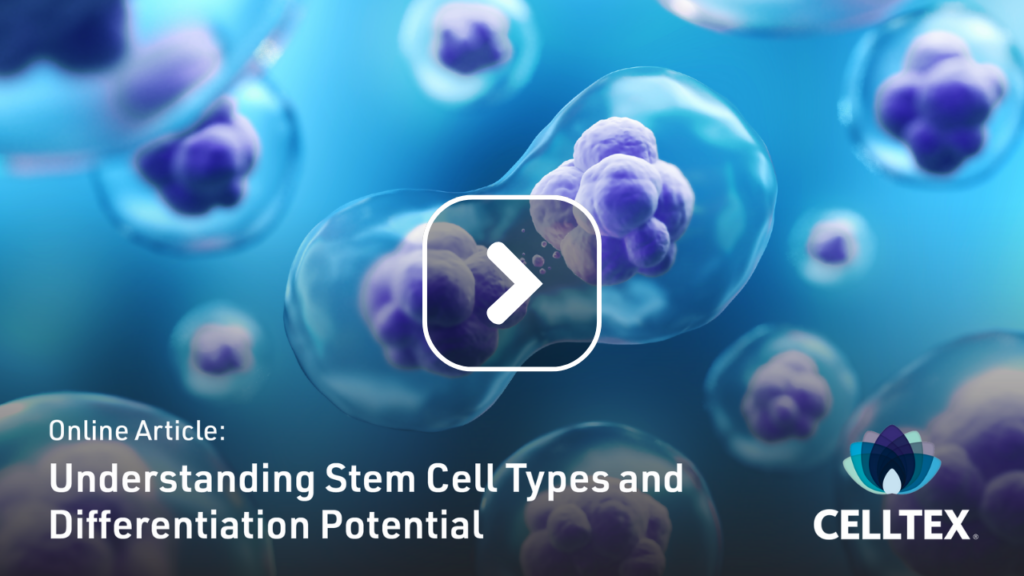
What Are the Properties of Mesenchymal Stem Cells?
Researchers have known for decades that MSCs are capable of self-renewal and multipotency—meaning they can differentiate into a variety of specialized cell types such as bone, cartilage, and muscle cells.
However, MSCs are more than just their differentiation potential. These special stem cells have been shown to possess several favorable properties that have led to advances in regenerative medicine:
Trophic Activity
What makes MSCs unique is their ability to produce a variety of biologically active molecules, including trophic factors. Trophic factors are special bioactive molecules that support the growth, survival, and function of cells. They function as cellular messengers and contribute to the overall health and maintenance of tissues in the body [7].
Depending on the microenvironment and interactions with other cells, MSCs will release bioactive factors that can help regulate several processes in the body, including:
- Inflammation: MSCs secrete factors that modulate the immune response. Some of these factors specifically inhibit the appearance and activation of immune cells known to cause inflammation.
- Blood Vessel Formation: MSCs secrete factors, such as vascular endothelial growth factor (VEGF), to promote angiogenesis, the formation of new blood vessels, which improves the flow of oxygen and nutrients to tissue.
- Antioxidant Production: MSCs can trigger the secretion of antioxidants, such as glutathione, potentially limiting the oxidative stress damage to tissue(s) caused by reactive oxygen species (ROS) [8].
- Excessive levels of ROS can damage DNA, proteins, and other essential components within cells and tissues.
- Oxidative stress is linked to several health complications, which is why antioxidants are so important.
- Scar Tissue Formation: MSCs secrete antifibrotic factors to prevent and reduce fibrosis—the formation of non-functional scar tissue. While part of the natural healing process, fibrosis is tightly regulated. Unchecked fibrosis can lead to the excessive accumulation of scar tissue which, in general, does not function as well as the original tissue and can even hinder normal tissue function. MSCs have been shown to modulate this process to allow for functional, healthy tissue to instead be generated at a site of injury [9].
Homing
In addition to the active release of a variety of bioactive molecules, MSCs undergo homing, the process by which cells find and travel to a specific destination. This ability enables MSCs to locate areas of the body where they are needed most.
Homing allows for MSC therapy to be administered via IV instead of a direct injection to the site of injury/concern, depending on a physician’s recommendation. Following administration, MSCs travel through the bloodstream to the site of inflammation due to damage or injury [10].
What Are Stem Cells Used For?
Now that you have a better understanding of what stem cells are, the different types of stem cells, and the unique properties of MSCs, let’s examine how MSCs may be applied to specific medical conditions.
Despite the first bone marrow transplant having occurred decades ago, for some people “stem cell therapy” conjures futuristic medicine. Undoubtedly, stem cell therapy will continue to evolve for decades to come. However, in many ways, the future is already here, as stem cell therapy has shown promise for:
- Autoimmune disorders
- Orthopedic injuries
- Degenerative conditions
- Cardiovascular disease
- Neurological Disorders
- Parkinson’s disease
- Alzheimer’s disease [23]
- Age-related degenerative vision loss
- Macular degeneration [24]
In addition to recovery and disease symptom management, stem cells have potential for general wellness and anti-aging purposes to help maintain one’s health well into old age.
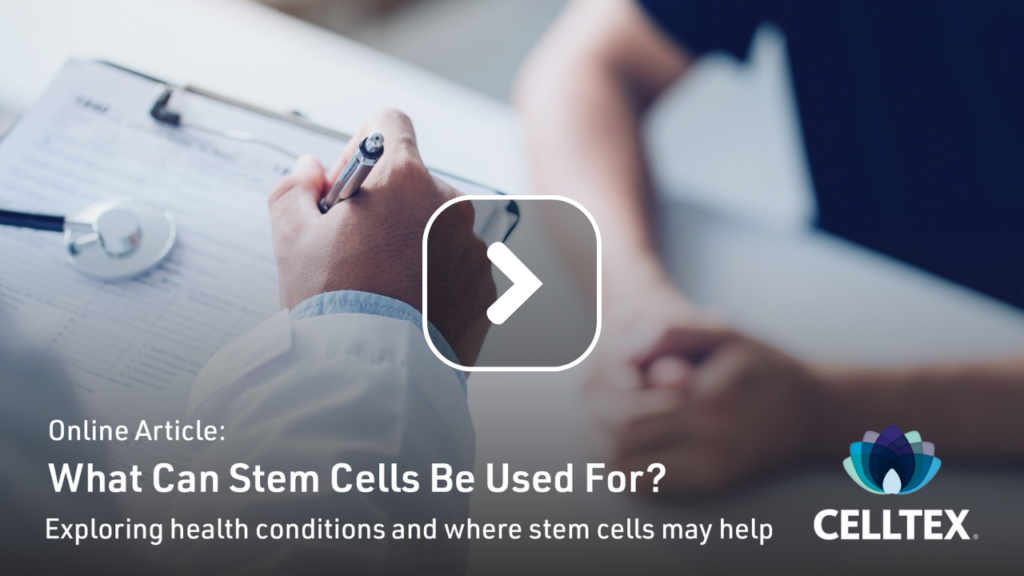
Where Are Stem Cells Located in The Body?
In short, just about everywhere. Mesenchymal Stem Cells have been found throughout the body, including in the muscle, skin, intestines, and even teeth. However, the most common tissue sources for MSCs are:
- Bone marrow – When MSCs were first discovered, they were found in bone marrow. It was then that bone marrow became the most common source for MSCs early on. These are the stem cells used for bone marrow transplants (BMTs).
- The procedure used to extract bone marrow—called bone marrow aspiration—can be very invasive, creating a need for alternative sources for MSCs.
- Adipose (fat) tissue – Adipose tissue has become another common source of MSCs because the tissue extraction procedure is minimally invasive and relatively simple to perform. Furthermore, adipose tissue has been found to yield more stem cells as compared to other tissue sources like bone marrow [25].
- Umbilical cord tissue – MSCs can also be obtained from several areas of the umbilical cord. Although umbilical cord-derived MSCs (UC-MSCs) are promising, most adults must use donated UC-MSCs for stem cell therapy. This potentially comes with more risks than using one’s own adipose-derived or bone marrow-derived MSCs (more on this later).
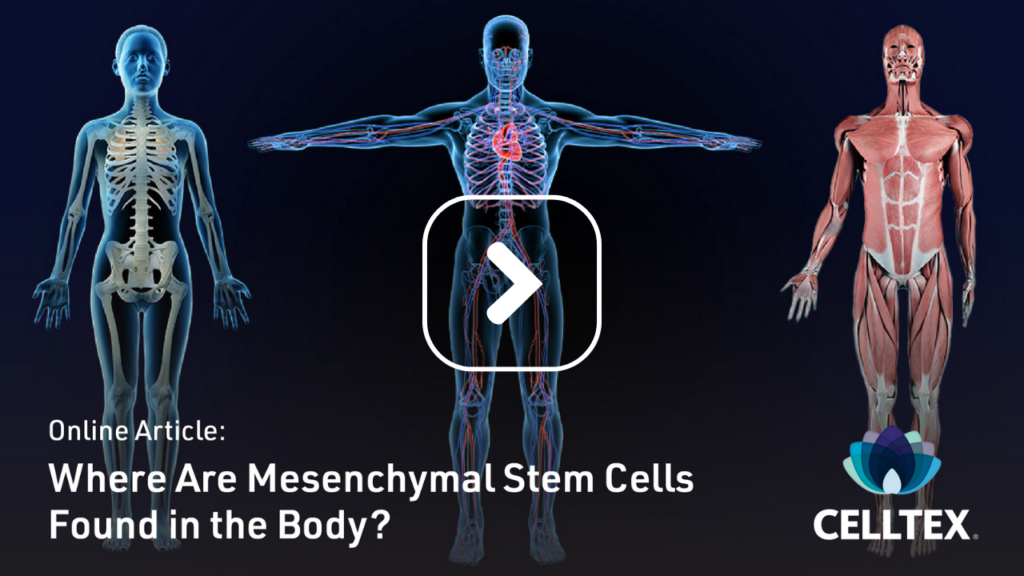
Should I Use My Own Stem Cells or Donor Stem Cells?
Another major factor to consider when comparing regenerative medicine options is whether the Mesenchymal Stem Cells used are autologous or allogeneic.
- Autologous signifies that the MSCs are extracted from one’s own body, whether it be from adipose tissue, bone marrow, or some other tissue source.
- From Greek, “auto-” means self.
- Allogeneic means that the MSCs are extracted from someone else’s body and donated for use in regenerative medicine.
- From Greek, “allo-” means other.
The difference between these two options raises a question we are often asked here at Celltex: “Would it be more effective to use my own stem cells or a donor’s?”
While both options can be effective, using your own stem cells may present less risk.
Extreme care must be taken when using a donor’s stem cells to avoid a potentially life-threatening condition called graft versus host disease (GvHD). The donated stem cells must be processed correctly and be a genetic match to the host. Otherwise, the body’s immune system may recognize the donor’s stem cells as a foreign substance, thus triggering a hyperinflammatory response (i.e., GvHD). So far, GvHD has not been a substantial issue with MSC therapy but is more of a concern when it comes to the hematopoietic stem cells (HSCs) used in BMTs [26].
Because autologous stem cells come from your own body, there is a significantly lower risk of rejection once the MSCs are administered back into the body.
However, individuals considering stem cell therapy—particularly those who are of an advanced age or have a chronic condition—may wonder if their own cells are even healthy and viable enough to be effective. In these cases, would it make more sense to use, for example, a grandchild’s donated UC-MSCs?
While it is always recommended to bank your stem cells earlier in life, it is possible to extract and cultivate healthy stem cells at any age.
Celltex is able to isolate only the healthiest, most viable stem cells and culture them into the hundreds of millions from a single adipose tissue sample. With Celltex’s technology, a lifetime supply of one’s own MSCs can be made available to just about anyone.
Putting It All Together: The Stem Cells Banked with Celltex
Celltex Therapeutics works with autologous, adipose-derived Mesenchymal Stem Cells for numerous reasons:
- Autologous: Safety is important to Celltex. When stem cells come from your own body, the risk of rejection during stem cell therapy is significantly reduced.
- Adipose-Derived: Adipose (fat) tissue is significantly easier to obtain with a simple, mini liposuction procedure and yields more MSCs, as compared to other MSC tissue sources like bone marrow.
- Mesenchymal Stem Cells (MSCs): Not only can MSCs differentiate into multiple cell types in the body, but they also secrete many factors that are valuable for tissue repair and regeneration.
Many regenerative medicine options only offer MSC quantities in the tens of thousands; however, in many cases, an even larger number of MSCs may be needed. Celltex’s Adult Stem Cell Banking process yields MSC quantities in the hundreds of millions—greatly increasing the potential for positive, effective results.
Read more about the importance of quantity in stem cell therapy.
Celltex Therapeutics: The Leader in Adult Stem Cell Banking
Founded by entrepreneur David G. Eller and world-renowned spine surgeon Dr. Stanley C. Jones, Celltex Therapeutics is revolutionizing medical care with the process of Adult Stem Cell Banking.
Adult Stem Cell Banking is the critical first step in the stem cell therapy process that separates Celltex from other regenerative medicine options.
Adult Stem Cell Banking with Celltex involves:
1. A simple, one-time extraction (mini liposuction) of an individual’s fat tissue
2. Isolating the MSCs from that tissue sample
3. Expanding the pure MSCs in quantity
4. Cryopreserving a lifetime supply for future therapeutic uses
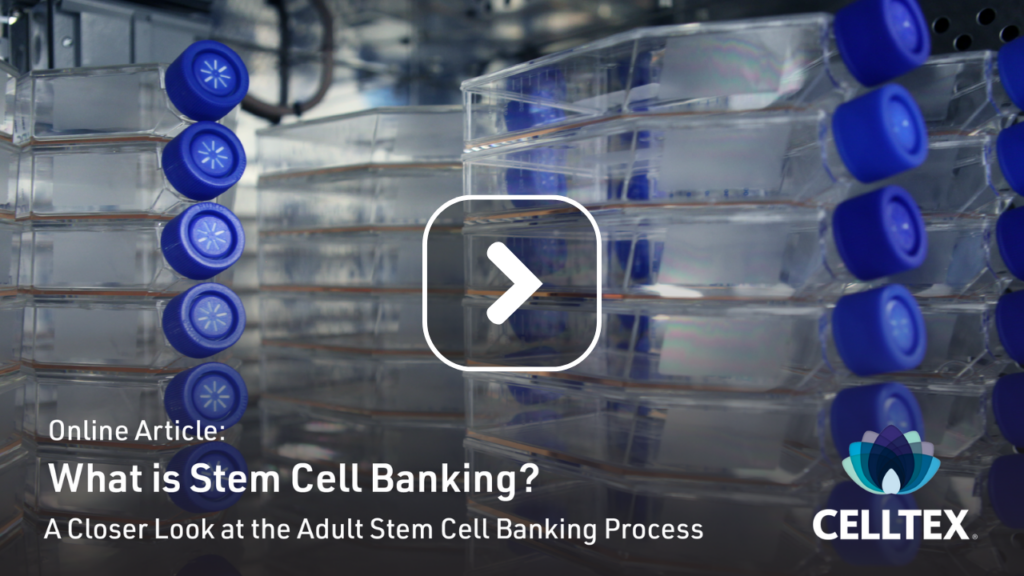
Celltex’s technology enables an individual’s banked MSCs to be expanded into quantities exponentially greater than that of current same-day stem cell clinic offerings, greatly increasing the potential for positive results when therapeutic application is necessary.
This difference in cell quantity, along with the compatibility from using one’s own cells contributes to the superior quality of Celltex-produced MSCs. Celltex-produced MSCs have the potential to succeed where same-day stem cell therapies have failed before.
Learn More About Celltex
Interested in learning more about Celltex stem cell banking or stem cell therapy? Request a virtual brochure, watch any of our educational webinars, or contact us directly.
References
- Hatton, I. A., Galbraith, E. D., Merleau, N. S. C., Miettinen, T. P., Smith, B. M., & Shander, J. A. (2023). The human cell count and size distribution. Proceedings of the National Academy of Sciences of the United States of America, 120(39), e2303077120. https://doi.org/10.1073/pnas.2303077120
- Chiu, L. S. (2016, March 24). Stem Cells: An Overview. BrainFacts.org. https://www.brainfacts.org/brain-anatomy-and-function/cells-and-circuits/2016/stem-cells-an-overview-032416
- Konstantinov I. E. (2000). In search of Alexander A. Maximow: the man behind the unitarian theory of hematopoiesis. Perspectives in biology and medicine, 43(2), 269–276. https://doi.org/10.1353/pbm.2000.0006
- Callea, F., & Callea, M. (2011). Adam’s rib and the origin of stem cells. American journal of hematology, 86(6), 529. https://doi.org/10.1002/ajh.22005
- Stem Cells. University of Nebraska Medical Center. https://www.unmc.edu/stemcells/educational-resources/index.html
- Wang, LT., Ting, CH., Yen, ML., Liu, KJ., Sytwu, HK., Wu, K. K. & Lin B. L. (2016). Human mesenchymal stem cells (MSCs) for treatment towards immune- and inflammation-mediated diseases: review of current clinical trials. Journal of Biomedical Sciences 23(1), 76. https://doi.org/10.1186/s12929-016-0289-5
- Hofer, H. R., & Tuan, R. S. (2016). Secreted trophic factors of mesenchymal stem cells support neurovascular and musculoskeletal therapies. Stem cell research & therapy, 7(1), 131. https://doi.org/10.1186/s13287-016-0394-0
- Cho, G. H., Bae, H. C., Cho, W. Y., Jeong, E. M., Park, H. J., Yang, H. R., Wang, S. Y., Kim, Y. J., Shin, D. M., Chung, H. M., Kim, I. G., & Han, H. S. (2023). High-glutathione mesenchymal stem cells isolated using the FreSHtracer probe enhance cartilage regeneration in a rabbit chondral defect model. Biomaterials research, 27(1), 54. https://doi.org/10.1186/s40824-023-00398-3
- Rockel, J. S., Rabani, R., & Viswanathan, S. (2020). Anti-fibrotic mechanisms of exogenously-expanded mesenchymal stromal cells for fibrotic diseases. Seminars in cell & developmental biology, 101, 87–103. https://doi.org/10.1016/j.semcdb.2019.10.014
- Henschler, R., Deak, E., & Seifried, E. (2008). Homing of Mesenchymal Stem Cells. Transfusion medicine and hemotherapy : offizielles Organ der Deutschen Gesellschaft fur Transfusionsmedizin und Immunhamatologie, 35(4), 306–312. https://doi.org/10.1159/000143110
- Lopez-Santalla, M., Fernandez-Perez, R., & Garin, M. I. (2020). Mesenchymal Stem/Stromal Cells for Rheumatoid Arthritis Treatment: An Update on Clinical Applications. Cells, 9(8), 1852. https://doi.org/10.3390/cells9081852
- Li, A., Guo, F., Pan, Q., Chen, S., Chen, J., Liu, H. F., & Pan, Q. (2021). Mesenchymal Stem Cell Therapy: Hope for Patients With Systemic Lupus Erythematosus. Frontiers in immunology, 12, 728190. https://doi.org/10.3389/fimmu.2021.728190
- Vieujean, S., Loly, J. P., Boutaffala, L., Meunier, P., Reenaers, C., Briquet, A., Lechanteur, C., Baudoux, E., Beguin, Y., & Louis, E. (2022). Mesenchymal Stem Cell Injection in Crohn’s Disease Strictures: A Phase I-II Clinical Study. Journal of Crohn’s & colitis, 16(3), 506–510. https://doi.org/10.1093/ecco-jcc/jjab154
- Gugliandolo, A., Bramanti, P., & Mazzon, E. (2020). Mesenchymal Stem Cells in Multiple Sclerosis: Recent Evidence from Pre-Clinical to Clinical Studies. International journal of molecular sciences, 21(22), 8662. https://doi.org/10.3390/ijms21228662
- Izadi, M., Sadr Hashemi Nejad, A., Moazenchi, M., Masoumi, S., Rabbani, A., Kompani, F., Hedayati Asl, A. A., Abbasi Kakroodi, F., Jaroughi, N., Mohseni Meybodi, M. A., Setoodeh, A., Abbasi, F., Hosseini, S. E., Moeini Nia, F., Salman Yazdi, R., Navabi, R., Hajizadeh-Saffar, E., & Baharvand, H. (2022). Mesenchymal stem cell transplantation in newly diagnosed type-1 diabetes patients: a phase I/II randomized placebo-controlled clinical trial. Stem cell research & therapy, 13(1), 264. https://doi.org/10.1186/s13287-022-02941-w
- Ren, X., Zhong, W., Li, W., Tang, M., Zhang, K., Zhou, F., Shi, X., Wu, J., Yu, B., Huang, C., Chen, X., & Zhang, W. (2023). Human Umbilical Cord-Derived Mesenchymal Stem Cells Alleviate Psoriasis Through TNF-α/NF-κB/MMP13 Pathway. Inflammation, 46(3), 987–1001. https://doi.org/10.1007/s10753-023-01785-7
- Munda, M., & Velnar, T. (2023). Stem cell therapy for degenerative disc disease: Bridging the gap between preclinical promise and clinical potential. Biomolecules & biomedicine, 10.17305/bb.2023.9518. Advance online publication. https://doi.org/10.17305/bb.2023.9518
- Knight, M. N., & Hankenson, K. D. (2013). Mesenchymal Stem Cells in Bone Regeneration. Advances in wound care, 2(6), 306–316. https://doi.org/10.1089/wound.2012.0420
- Zhu, C., Wu, W., & Qu, X. (2021). Mesenchymal stem cells in osteoarthritis therapy: a review. American journal of translational research, 13(2), 448–461.
- Munda, M., & Velnar, T. (2023). Stem cell therapy for degenerative disc disease: Bridging the gap between preclinical promise and clinical potential. Biomolecules & biomedicine, 10.17305/bb.2023.9518. Advance online publication. https://doi.org/10.17305/bb.2023.9518
- Kalou, Y., Al-Khani, A. M., & Haider, K. H. (2023). Bone Marrow Mesenchymal Stem Cells for Heart Failure Treatment: A Systematic Review and Meta-Analysis. Heart, lung & circulation, 32(7), 870–880. https://doi.org/10.1016/j.hlc.2023.01.012
- Jeong, H., Yim, H. W., Park, H. J., Cho, Y., Hong, H., Kim, N. J., & Oh, I. H. (2018). Mesenchymal Stem Cell Therapy for Ischemic Heart Disease: Systematic Review and Meta-analysis. International journal of stem cells, 11(1), 1–12. https://doi.org/10.15283/ijsc17061
- Farahzadi, R., Fathi, E., & Vietor, I. (2020). Mesenchymal Stem Cells Could Be Considered as a Candidate for Further Studies in Cell-Based Therapy of Alzheimer’s Disease via Targeting the Signaling Pathways. ACS chemical neuroscience, 11(10), 1424–1435. https://doi.org/10.1021/acschemneuro.0c00052
- Holan, V., Palacka, K., & Hermankova, B. (2021). Mesenchymal Stem Cell-Based Therapy for Retinal Degenerative Diseases: Experimental Models and Clinical Trials. Cells, 10(3), 588. https://doi.org/10.3390/cells10030588
- Via, A. G., Frizziero, A., & Oliva, F. (2012). Biological properties of mesenchymal Stem Cells from different sources. Muscles, ligaments and tendons journal, 2(3), 154–162.
- Kelly, K., & Rasko, J. E. J. (2021). Mesenchymal Stromal Cells for the Treatment of Graft Versus Host Disease. Frontiers in immunology, 12, 761616. https://doi.org/10.3389/fimmu.2021.761616
About Celltex
Celltex Therapeutics Corporation is an international leader in cryopreservation, or banking, and culturing of autologous, adipose-derived Mesenchymal Stem Cells (MSCs) for therapeutic use and has remained committed to improving and maintaining clients’ quality of life. Celltex has the unique ability to do what no one else can: isolate, expand and cryopreserve your own MSCs to create your master cell bank, all from one small sample of your adipose tissue. This bank of MSCs can then be used to produce hundreds of millions of clinical-grade, genetically stable MSCs that are available for therapeutic use. To learn more about Celltex, visit www.celltexbank.com
Post Tags: adult stem cell therapy, innovation, stem cell banking, stem cell therapy
More Recent News
Exploring Regenerative Medicine Beyond Stem Cell Therapy
For many, stem cell therapy is to regenerative medicine what Google is to internet searches. Yet, there are other procedures within the regenerative medicine field that may be recommended depending on the health concern being addressed.
In this article, we explore several regenerative medicine options, including platelet-rich plasma (PRP), bone marrow aspirate concentrate (BMAC), stromal vascular fraction (SVF), and exosomes.
Read MoreWhat Makes MSCs So Promising? A Deep Dive on Mesenchymal Stem Cells
Present in the body throughout one’s lifespan, adult Mesenchymal Stem Cells (MSCs) can be used in many types of regenerative medicine. This article explores how MSCs work in the body and what makes them suitable for therapeutic application.
Read More
